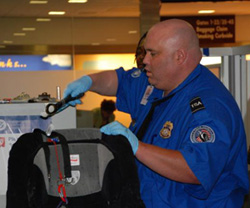Just one month after the worst mass shooting in modern American history in Las Vegas, the deadliest mass shooting in a place of worship occurred at The First Baptist Church in Sutherland Springs, Texas. The gunman, Devin Patrick Kelley, killed 26 people and wounded 20 others on Sunday with an AR-556 assault rifle.
President Donald Trump condemned the act as “evil,” and called it “a mental health problem,” not a “guns situation.” However, a study of 133 mass shootings has shown that, as in the Texas attack, most mass shootings have a domestic violence link, while in just 11% of the incidents were concerns about the mental health of the shooter brought to the attention of a medical practitioner, legal authority, or school official. That study also showed that when assault weapons or high-capacity magazines were used, an average of eight more people were shot, indicating the pivotal role of the weapon in increasing the carnage. Therefore, the prevalence of high-powered weapons in the U.S. is an enormous contributing factor to the growing frequency and lethality of mass shootings. The call to address the nation’s mental health issues is a familiar dodge of those seeking to avoid a discussion of gun policy.
If the president truly believes mass shootings are a mental health issue, why did his administration block the Social Security Administration from reporting mentally impaired recipients of federal aid to a national background check database? These are individuals on disability support who suffer from severe mental illnesses. President Obama had introduced an administrative rule to keep people with severe mental illnesses from purchasing guns, and Trump, demonstrating perhaps his support for the gun lobby’s agenda, signed a measure to overturn this policy.
The U.S. has 5% of the world’s population, but over a third of the mass shootings. Rates of mental illness, while somewhat higher than other countries, fail to account for the enormous gap in the number of mass shootings between the U.S. and other advanced nations. Countries such as the U.K., Germany, and Japan have at most a few dozen gun homicides, and no more than one or two mass shootings per year. By contrast, the U.S. already has had more than 300 mass shootings this year. Therefore, the gap in mass shootings is too great to be explained by more modest differences in the rates of mental illness.
Psychiatrist Richard Friedman writes that psychiatry cannot protect us from mass murderers. He states that while many mass shooters have a severe personality or psychotic disorder, they often avoid the mental health system altogether, as they are not interested in treatment and do not see themselves as ill. He adds that it is difficult, if not impossible, to predict which individuals will become violent. While millions of Americans have a mental disorder or a serious anger management issue, just an infinitesimal fraction will commit these atrocities. Friedman argues that the focus should not be on detecting mass killers in advance, but on the availability of lethal weapons. He points to Australia, a country that has virtually eliminated mass shootings since automatic and semiautomatic long guns were banned.
A greater propensity toward violence also does not explain the disproportionate number of these massacres in the U.S. International crime surveys show that the U.S. is in the middle of the pack with regard to violence in general. But it’s an outlier in lethal violence. This finding suggests that it is the greater prevalence of lethal weapons in the U.S. that leads more altercations to escalate to homicides.
Those seeking reform are likely to be frustrated once again by the absence of bold national legislation, such as that adopted by Australia. We have a president who believes that mass shootings are not a “guns situation,” and a Republican-dominated Congress that has no intention of defying the gun lobby. Recent polling shows that gun rights advocates are more likely to be single-issue voters who are politically active than are those who favor reform. Partisan gerrymandering has also contributed to a more polarized political environment in which representatives in Republican-controlled districts resist gun policy changes, fearing that more conservative candidates, backed by the gun lobby, will challenge them in the primaries.
In this environment, the disgraceful avoidance of this issue by lawmakers is likely to persist, and one wonders what type or level of atrocity will stimulate bold action on their part. When will our elected representatives place a higher value on the lives of their fellow citizens than on weapons of war designed for one purpose: to kill the largest number of people as quickly as possible?
Tom Gabor is a criminologist, sociologist, and author of Confronting Gun Violence in America.


